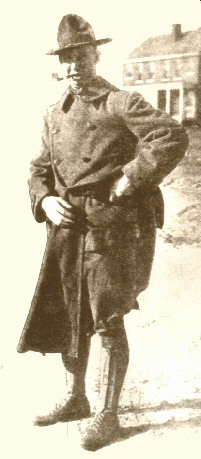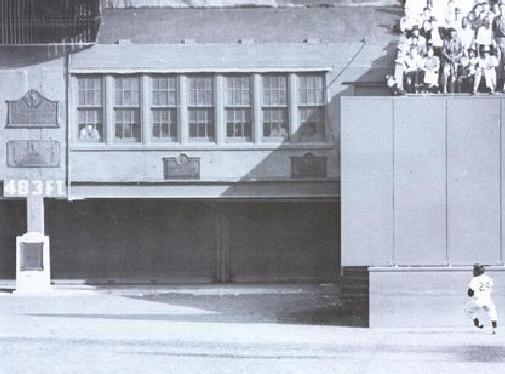 Eddie
Grant was a Harvard graduate who played 10 years in the Majors. After a
three hit debut with the Cleveland Naps of the American League, he went
to the minors. He reappeared with the 1907 Phillies, and took over as leadoff
batter in 1908, leading the NL in at-bats in 1908 and 1909. Eddie
Grant was a Harvard graduate who played 10 years in the Majors. After a
three hit debut with the Cleveland Naps of the American League, he went
to the minors. He reappeared with the 1907 Phillies, and took over as leadoff
batter in 1908, leading the NL in at-bats in 1908 and 1909.
Grant became a fine-fielding third baseman, fast on the bases and dependable in the clutch. In 1915, after two-and-a-half seasons with the Giants, where he was a favorite of John McGraw, he retired to practice law in New York City. When war was declared on Germany, he joined the 307th Infantry Regiment, 77th Infantry Division, entering the service from New York. He was leading a mission in the Argonne Forest to rescue the "Lost Battalion" when he was killed by German shell fire. He became one of three Major League players killed in World War I. Find more... Lost Battalion information links via Google Search. (On 30 May 1921) A monument to Eddie Grant's memory was placed in centerfield in the Polo Grounds' in New York. Each Memorial Day there was a wreath-laying ceremony at his plaque. Image left: Grant in Officers Training at Plattsburgh, NY Text and image this section are from FindaGrave.com The best and most detailed Eddie Grant article found on the internet is featured in the October 2004 on-line Smithsonian Magazine (and also in their print magazine). It is titled Ultimate Sacrifice. Access to the full text article - in PDF format - is provided at that website. Eddie Grant is buried at the:
Meuse-Argonne
American Cemetery
Link to Eddie Grant bibliography is HERE For baseball history buffs, here are more links relevant to the Eddie Grant story including historical information about the Polo Grounds (Brush Stadium) and the NY Giants, including interesting info about Coogan's Bluff |
